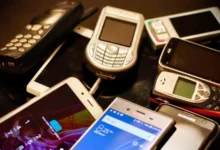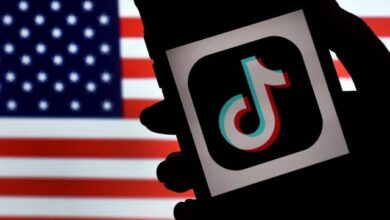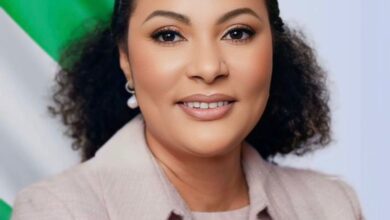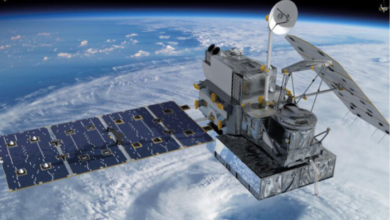OPINION: Why Africa’s Internet Connectivity Remains Poor

With an anticipated 70% broadband penetration in Nigeria by 2025, many African countries may still be grappling with how to get their populations out of the outskirts of globalization.
A third of the global population is without internet and the International Telecommunications Union (ITU) thinks it could be addressed by 2030 in line with the Sustainable Development Goals(SDG) template.
Strangely less than one-third of the African population has the privilege of accessing broadband connectivity. Shockingly too,21 out of the 25 countries with the least connectivity in the world find their home within the borders of Africa.
And with a poor internet penetration rate of a mere 36 percent, Africa lags significantly behind the global average of 62.5 percent.
Africa shares this unenviable position with some countries in Asia despite the manifest growth rate in China and India.
According to a report by Google and the International Finance Corporation (IFC) Africa has a growing tech market that has been hailed as a game-changer for the economy, saying “Africa is a continent on the rise.”
Africa’s digital economy, the report says,” has the potential to contribute nearly $180 billion, a 5.2 percent of the continent’s GDP, by 2025. It’s a staggering figure that speaks volumes about the untapped potential waiting to be unleashed.”
The report further says
“Africa’s technology ecosystem is full of life, with capital investments hitting all-time highs.
In 2022 alone, venture capital deals on the continent experienced a remarkable eight percent surge, surpassing the previous year’s record and amassing a total of $6.5 billion, according to renowned global investment platform, Partech. These numbers tell a tale of growing confidence and mounting interest in Africa’s vibrant and promising tech sector.”
SDG Digital highlights that the funding gap of over USD3.7 trillion for the SDGs should focus international efforts on enablers—such as infrastructure and connectivity—as well as the pooling of resources through collaboration including the private sector and the utilization of diverse financing methods.
There are hopes on the horizon as SDG Digital received new commitments to accelerate progress on the Sustainable Development Goals from which African nations are likely to be major beneficiaries.
Diverse partnerships and financing are proven to scale up digital solutions and drive innovation.
According to ITU while 2020 saw a double-digit growth in Internet connectivity, the number of people offline worldwide continues to decline to 33 per cent in 2023, according to the latest data from ITU. Only 67 per cent of the world’s population, or 5.4 billion people, will be online in 2023, the report said.
ITU estimates that growth in Internet connectivity remains the strongest in low-income countries including Africa where data indicate that Internet users increased by about 17 per cent over the past year. However, less than one-third of individuals are connected to the Internet in these countries.
Africa is a late comer to digitalisation, but also a rather fast adopter of technology.
Between 2010 and 2021, the internet penetration rate across the region grew from 9.6% to 33%(individuals using the internet) the International Telecommunication Union [ITU] reported in 2021.
Internet infrastructure is weighed down by challenges ranging from considerable digital divides between regions and communities to the affordability of access.
But as more Africans get online, there have also been improvements in the level of internet infrastructure. Tremendous shifts in terms of submarine cable connections have happened over the last 10–15 years:
By 2008, only 16 African countries were connected to a submarine cable system.
According to Telegeography, 71 cable systems connected to Africa are active or under construction as of 2022.
“The number of cables connecting the region with other parts of the world keeps growing, and this contributes to higher internet penetration rates, reductions in the costs of internet services, stronger competition in the telecom market, and lowered risks of internet access disruptions. “
SurfShark reports that the divide in internet connectivity is especially high when it comes to fixed broadband internet. Lower-income countries work 4.1 times more for 3.3 times slower internet. On average, people living in rich countries enjoy internet speeds of 140 Mbps for a bit less than 3 hours of work per month, while lower-income countries get only 42 Mbps for more than 12 hours of work. The gap is smaller when it comes to mobile internet, but only affordability-wise.
Lower-income countries work 1.6 times more for 3.1 times slower internet compared to high-income countries. On average, people living in higher-income countries enjoy mobile internet speeds of 96 Mbps for 1 hour 41 minutes of work per month, while lower-income countries get only 32 Mbps for more than 2 hours 37 minutes of work.
The report says higher income does not necessarily mean that the country has affordable, high-quality internet. Other factors, such as the quality of the e-infrastructure in the geographical region, might have an even more significant impact.
For example, South Africa is considered to be a higher-income country, but its fixed internet speed (70 Mbps) is twice lower than the average in higher-income countries. On the other hand, the Philippines – a lower-income country – has three times faster-fixed internet (119 Mbps) than the average in the lower-income group.
SurfShark further reports that the average time that people work to afford the cheapest internet in lower-income countries is up to 4 times higher than that in wealthier countries. Moreover, poor countries have, on average, a 3 times slower internet connection. One-third (39 out of 120) of analyzed countries are classed as lower income and almost half of the global population.
Across Africa, barriers to access are not only related to the availability of last-mile connectivity. In fact, affordable access to the internet remains the main challenge for the continent.
In 2021, according to the Alliance for Affordable Internet (A4AI) and ITU, Africans had to pay, on average, 6.5% of their monthly income to get 2GB of mobile data which, for example, is used to watch four hours of low-quality video on Netflix. In comparison, users were spending, on average, 1.7% of their monthly income in Asia-Pacific and 0.5% in Europe. Overall, the affordability of broadband connectivity remains the lowest across Africa, with fixed broadband being less affordable than mobile broadband.
To bridge the connectivity gap, significant investment is required. The World Bank estimates that achieving universal and high-quality internet access throughout Africa demands a staggering $100 billion investment. A substantial portion of this amount, precisely 80 percent should be allocated to core infrastructure development, including the deployment of 250,000 new 4G base stations, laying at least 250,000 kilometers of fibre optic cables, and transitioning to 5G technology. These investments will pave the way for the dramatic amplification of data centres’ demand. Then there’s the energy crisis.
In many parts of Africa, especially in rural and remote areas, a shortage of reliable electricity hampers the establishment and maintenance of essential communication infrastructure. Without a stable and accessible source of power, it becomes challenging to fuel and sustain the necessary infrastructure for connectivity. Nigeria, South Africa, and Egypt hold the ace in terms of internet connectivity in Africa. As of September 2023, Nigeria had a total internet connectivity of 159,534,91.
In terms of broadband connectivity Nigeria recorded 92,561,842 representing (48.49%) as of February 2023.
One of the driving factors behind South Africa’s internet enthusiasm is the increasing accessibility of the web across the country and the African continent.
In 2020, around 70% of South Africans had internet access, a figure that has likely grown since then.
By 2023, the nation boasted 43.48 million internet users, showcasing an impressive penetration rate of 72.3% among its population of 60.14 million. The South African government aims to achieve universal web access for all its citizens’ households by 2024, further fueling the digital surge.
Despite South Africa’s internet speed lagging behind the global average, the nation has been making strides in improving connectivity. In 2021, the country was ranked 68th globally for its digital quality of life. Moreover, South Africa stood out in terms of mobile and broadband internet affordability within Africa, along with commendable mobile internet stability.
DataReportal states that there were 75.66 million internet users in Egypt in January 2022.
It adds that Egypt’s internet penetration rate stood at 71.9 percent of the total population as at the start of 2022.
However, there are indications that these user figures reveal that 29.55 million people in Egypt did not use the internet at the start of 2022, meaning that 28.1 percent of the population remained offline at the beginning of the year.
Even though people are adapting quickly to technology across many African countries, funding to enable network expansion and improve connectivity is still a headache to these countries especially since a decline in Direct Foreign Investments (DFIs) set in.





